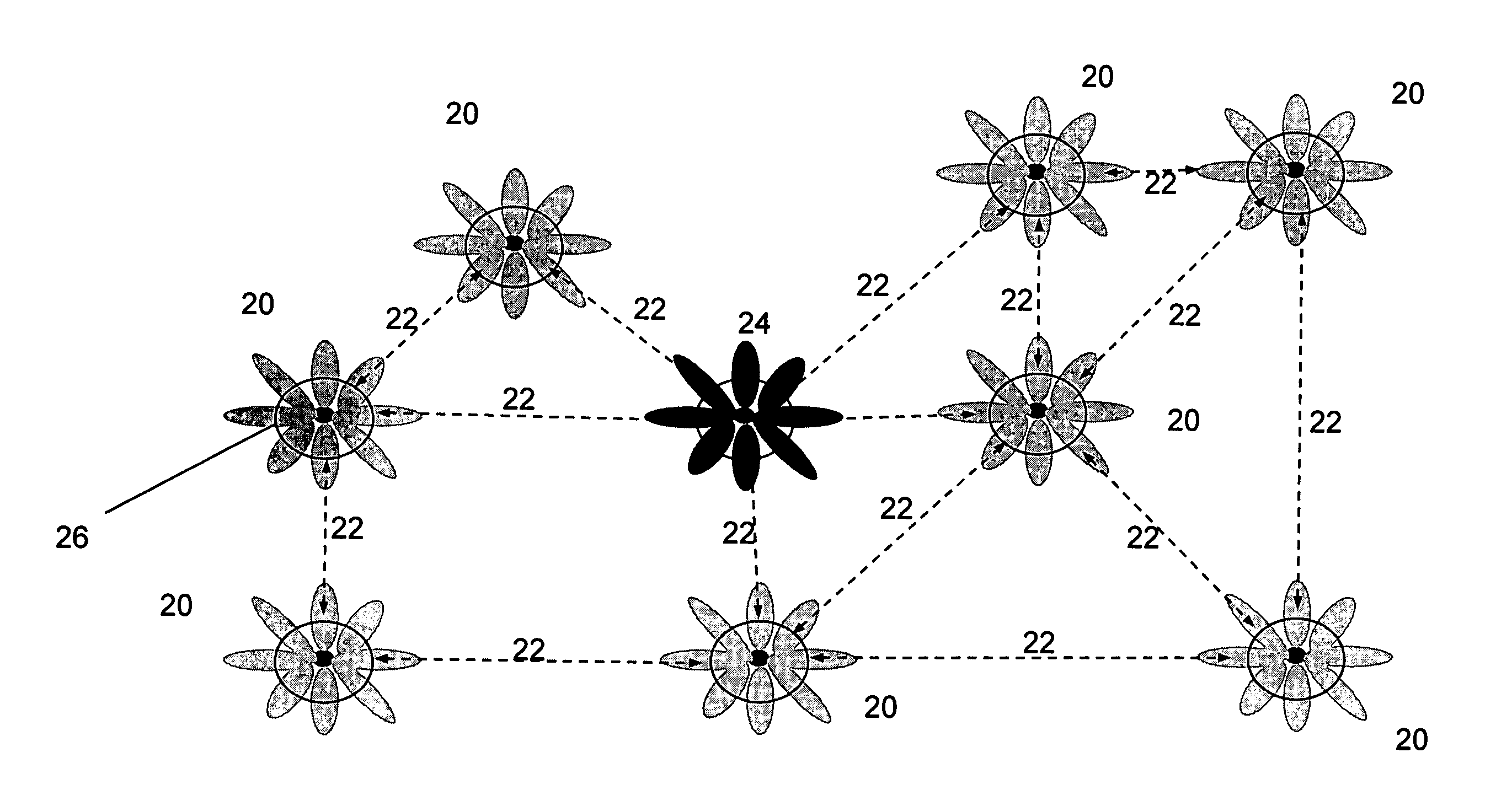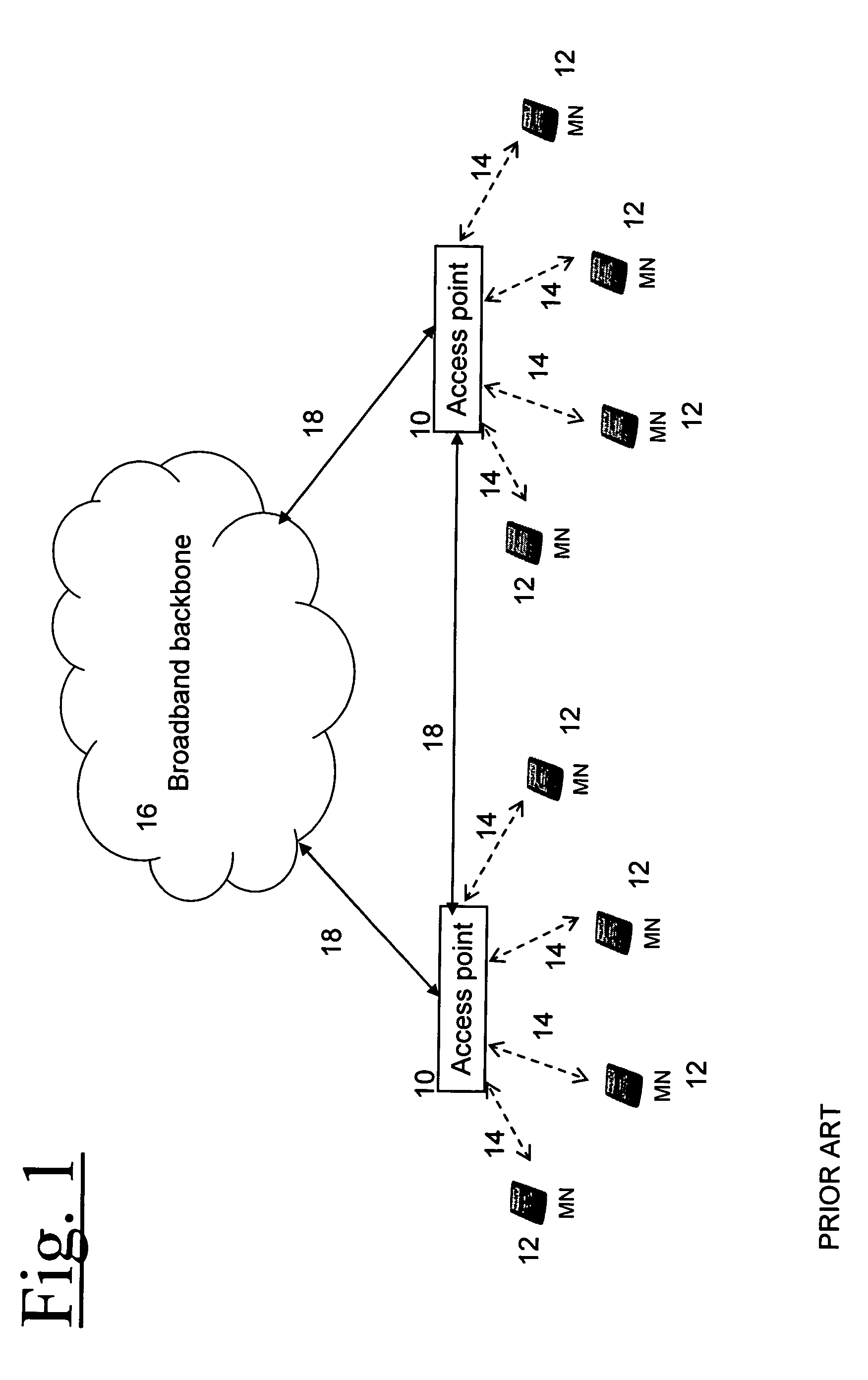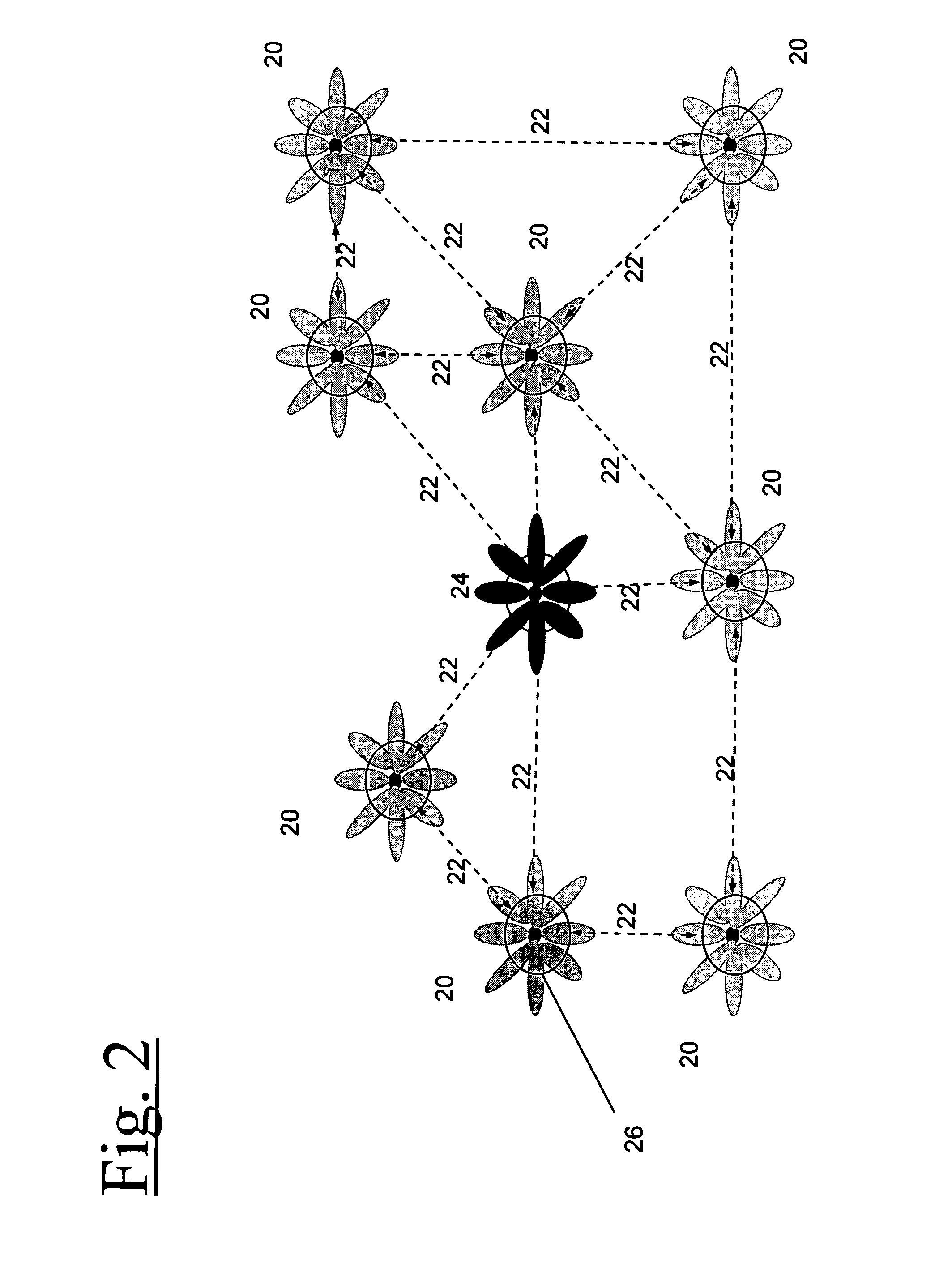Wireless communication
a technology of wired communication and backhaul infrastructure, applied in the field of wireless communication, can solve the problems of prohibitively expensive installation and maintenance of wired backhaul infrastructure, the need to provide wires of communication quality, etc., and achieve the effect of effectively coordinating the transmission of the transmission, avoiding interference, and avoiding the high installation and maintenance costs of wired ds
- Summary
- Abstract
- Description
- Claims
- Application Information
AI Technical Summary
Benefits of technology
Problems solved by technology
Method used
Image
Examples
Embodiment Construction
[0050] Embodiments of the present invention are described below by way of example only. These examples represent the best ways of putting the invention into practice that are currently known to the Applicant although they are not the only ways in which this could be achieved.
[0051] Referring to FIGS. 2-6, there is shown an example of the present invention.
[0052] FIG. 2 shows a schematic diagram of a CAN. The network comprises a number of Wireless Access and Routing Points (WARPs) 20, interconnected by wireless links 22. This CAN therefore uses a wireless `Distribution System` (DS). The WARPs perform a number of functions, including acting as access points (APs) for connection to mobile nodes (MNs) such as PDAs. The area of coverage of the access link (AL), which is the link from the AP to a MN is shown schematically in FIG. 2 by the circles 26. The WARPs are wirelessly connected to each other and to the Network Access Point (NAP) 24. The WARPs also act as Transit Nodes (TNodes), for...
PUM
 Login to View More
Login to View More Abstract
Description
Claims
Application Information
 Login to View More
Login to View More - R&D
- Intellectual Property
- Life Sciences
- Materials
- Tech Scout
- Unparalleled Data Quality
- Higher Quality Content
- 60% Fewer Hallucinations
Browse by: Latest US Patents, China's latest patents, Technical Efficacy Thesaurus, Application Domain, Technology Topic, Popular Technical Reports.
© 2025 PatSnap. All rights reserved.Legal|Privacy policy|Modern Slavery Act Transparency Statement|Sitemap|About US| Contact US: help@patsnap.com



